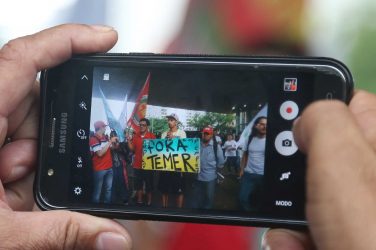A decree from President Michel Temer abolished the protected status of the National Reserve of Copper and Associates (Renca) – an area that is bigger than the size of Norway.
The reserve, which was established in 1984, covers about 18,000 square miles (46,610 square kilometers) and is thought to be rich in minerals such as copper and gold.
The government framed the decision as an effort to bring new investment and jobs to a country that recently emerged from the longest recession in its history. It also said that just under a third of the reserve would be opened up to mining, and that permissions would only be granted in specific areas.
“Permission to develop research and mining applies only to areas where there are no other restrictions, such as protection of native vegetation, conservation units, indigenous lands and areas in border strips,” a statement by the government said.
The decree comes as the country reported a 21-percent fall in deforestation rates within the country’s Legal Amazon region, which includes Amapá and Pará, in the two years from August 2015.
In July, Brazil announced a plan to revitalize its mining sector, and increase its share of the economy from four percent to six percent. The industry employs 200,000 people in a country where a record 14 million are out of work.
However, activists argue that the move could damage the world’s largest and most diverse tropical rainforest. Opposition politician Randolfe Rodrigues called it “the biggest crime against the Amazon forest since the 1970s.”
Brazilian public policy coordinator of the World Wide Fund for Nature (WWF), Michel de Souza, described the announcement as a “catastrophe,” which failed to consult the public and could leave the region vulnerable to corruption and conflict.
A report released by the WWF last week also warned that mining in the area would cause “demographic explosion, deforestation, the destruction of water resources, the loss of biodiversity and the creation of land conflict.”
The Amazon rainforest covers an area of 1.2 billion acres and produces 20 percent of the world’s oxygen. But deforestation and mining have destroyed it at an alarming rate.
Non-profit organization The Rainforest Foundation estimates that about one acre (4,046 square meters) is wiped out every second, and an estimated 20 percent of the rainforest has been destroyed over the past 40 years.
DW






